Only logged in customers who have purchased this product may leave a review.
Philodendron Cream Splash
$55.00
Philodendron ‘Cream Splash’ Is known as the Sweetheart Plant, or Heart-Leaf, due to the beautiful leaf shape. It is a vining Philodendron that can grow as a climber or left trailing from a hanging basket or shelf. This Cream Splash cream splash variety has stunning cram-yellow variegated leaves. It is the easiest house plant to grow.
The species of Philodendron hederaceum has been one of the most sought after house plants on the market for decades. They can come in 3 common colors/patterns & can be quite impressive when left to trail over a pot. They are often referred to as the Heart Shaped Philodendron, and it’s easy to see why.
It’s hard to believe the stunning Philodendron Cream Splash is one of the best beginner plants of all time. The dark green leaves with cream- and lime-colored neon splotches look like those of a fussy magazine-cover plant. Yet Philodendron Cream Splash tolerates a wide range of conditions and even some neglect. This article will cover all you need to know about Philodendron Cream Splash care, to help you get the most from this tropical beauty.
Cream Splash – Light green, cream, dark green
Philodendron ‘Cream Splash’ tolerates low light but prefers bright, indirect illumination. Its well-draining soil should dry halfway before watering. The plant likes warm room temperatures year-round, can handle normal humidity, and is hardy against pests and disease. Fertilize regularly during the growing season.
Philodendron Cream Splash only looks like a temperamental diva: it’s actually an easy-going, low-maintenance cultivar of the famous Heartleaf Philodendron. A fast-growing evergreen plant native to the Caribbean and Central America, it has spread its friendly vines on windowsills across the world.
The glossy, heart-shaped foliage is a combination of solid green and variegated leaves that feature a cream center stripe surrounded by lime-green swatches that look painted on. Every leaf has its own color pattern – each plant is unique. Its vines can climb or trail and may reach from 10 to 20 feet long.
Care
Part of this new favorite’s charm is how spectacularly simple Philodendron Cream Splash Care is – it’s as if nature relented and gave everyone the chance to enjoy an eye-catching tropical classic. Even if they don’t receive the most optimal care, the forgiving Philodendron Cream Splash carries on.
Of course the plant looks its best with proper care. It can lose variegation and become leggy in poor light … it can slow down or develop bare spots on top without proper water or fertilization. But it propagates in a water glass; and, though toxic to consume, it’s not prone to disease or pest infestation.
Toxicity
The Philodendron Cream Splash is toxic if ingested. It contains calcium oxalate crystals which cause mild to severe gastrointestinal upset to pets. Though not as dangerous to humans, the crystals can cause irritation and nausea if eaten. They are the major element in kidney stones.
Light
Philodendron Cream Splash is often considered a low-light plant, but they actually do better in bright, indirect lighting.
Artificial illumination is another good option. If you want to put them in a north-facing window or another spot without much ambient light – for example, the center of a room – artificial light can make up the difference.
Water
Philodendron Cream Splash isn’t fussy about watering; though, like most plants, they hate being overwatered. They aren’t as susceptible to root rot as many tropicals, but they aren’t invulnerable. Even if they don’t succumb to root rot outright, soil that stays too wet can slow their growth and cause smaller leaves.
The plant’s soil can become fairly dry without protest, but it doesn’t like drought. Let the soil dry out about halfway before watering – the top two inches at a minimum. Use your finger to check; don’t depend on a schedule.
Note: A pot’s material affects watering frequency. Terracotta pots promote faster evaporation because they are more porous than glazed or plastic containers.
The following are signs to watch for. Overwatering and underwatering can show similar symptoms, so check the roots and soil if you aren’t sure.
Yellow leaves usually means overwatering … but chronic drought also stresses leaves.
Foliage with brown edges usually means underwatering. Leaves that turn completely brown can mean root rot from overwatering.
Wilting is caused by a lack of internal pressure: Underwatered foliage wilts from lack of water; overwatering can rot the roots and starve the leaves.
Humidity
Another reason the Philodendron Cream Splash is such an exceptional low-maintenance plant is its tolerance of dry air indoors.
Like most tropicals, however, they do appreciate higher humidity. They tend to grow faster and produce larger leaves with more moisture in the air.
Indoor heating in wintertime can cause issues: if the plant looks lackluster and its leaves are developing brown edges, consider grouping it with other plants, placing humidity trays nearby, or read this article for more ideas for how to improve humidity for your houseplants.
Temperature
Another friendly characteristic of Philodendron Cream Splash care is that it thrives at room temperatures. It actually has a larger comfort range than we do and is happy at temperatures from 60F (15ºC) to 86ºF (30ºC) or even higher.
The Cream Splash grows better at the warm end of the thermometer. They can take extreme levels of high heat above 100ºF (38ºC) too, but in those conditions make sure their soil moisture is sufficient and they have bright indirect lighting.
Soil
The Philodendron Cream Splash is a hemiepiphyte that can live part of its life in a tree canopy. It doesn’t need traditional soil.
Because of this, the plant does best in a loose and well-draining mix with good water retention. Soilless mixes of sphagnum peat moss or coco coir work well. Adding 50% perlite to a regular potting mix can be effective, too, but avoid excessive organic amendments as these can decompose and become compacted. Read my guide to choosing houseplant soil for more information.
Note: The need for fertilization increases in a soilless medium.
Fertilizer
The Philodendron Cream Splash grows quickly in the warm season, which can be year-round for an indoor plant. Fertilize according to how fast they’re growing.
Some owners make two or three evenly-spaced applications from spring through summer; others feed a half-strength monthly dose. Another method is to dilute the formula even more heavily and apply when you water.
Here are some popular and effective fertilizers:
Fish emulsion – This organic product is great if you can stand the smell (it actually dissipates quickly when well diluted). It’s safe and delivers a good nutrient profile.
Worm Castings – This pricier organic alternative is odor-free and easy to apply: simply scatter the castings on the soil and water in.
Slow-release Blend – A fast-growing Philodendron can do well with formulas that slowly release nutrients into the soil.
Other Synthetics – Liquid fertilizers or those dissolved in water are easy to measure and apply. They’re economical and can produce good results. Dilute to half or a quarter of the recommended amount, and flush the soil each time you water.
Undernutrition isn’t common for most plants, but a prolific Philodendron in a soil-free mix occasionally has this issue. The following are signs the plant is running low on fuel:
Leaves
Take note if the weather is warm and the plant has adequate light and water, but you’re not seeing growth.
Small Leaf Size – Consider the soil’s fertility if your Cream Splash has small leaves.
Pale New Growth – New foliage that lacks color can mean the soil doesn’t have enough essential micronutrients, especially calcium and/or magnesium.
Check out this article that covers all you need to know about fertilizing houseplants to learn more.
Flowers
The Philodendron Cream Splash seldom blooms in potted captivity, but don’t worry: you’re not missing much! Even if you created an indoor rainforest, it would take years of growth before the plant would reach flower-bearing age.
The blooms aren’t real flowers, anyway: they are inflorescences like that of a Peace Lily, composed of a spadix and spathe. Also, you can propagate cuttings more easily than seeds … we can leave the plant’s flowering habits to Mother Nature and enjoy the amazing foliage.
Trimming stems stimulates growth from its remaining nodes – the vine doesn’t branch from the cut, but pruning can trigger new leaves from nodes up the stem. This helps create a bushier plant.
Care Tips
A single Philodendron Cream Splash alone in a pot will look leggy even if healthy … for a bushier look, you need a number of individual plants. If you’re propagating to start a new pot, plan on using between 10 and 15 cuttings.
If your plants are too sparse and leggy, you can trim them back to bring in new, thicker growth. Replanting the cuttings back in the pot also creates a fuller display.
Philodendron Cream Splash’s leaves tend to grow larger when the plant is staked. Its roots attach to rough materials like a cedar stake, but you’ll need to use ties with a smooth surface such as bamboo.
If the top of your pot has “bald spots,” there’s an easy fix. Bring stems up to the soil and use bobby pins to secure its node (or several) to the soil. In a few weeks, roots and new growth will emerge from the pinned nodes to fill out the top section.
Don’t let fertilizer or pesticides dry on the leaves. Wrinkled leaves are a symptom of a phytotoxic reaction – washing the leaves with clean water will prevent further damage.
Mature leaves naturally decline with age and can become discolored before falling off. Watch the new leaves to determine if the plant is under stress.
The Philodendron Cream Splash’s standout feature is its dramatic variegation, so having the plant revert to all-green foliage is a problem. Inadequate light is the most common cause, but even a healthy plant may lose color as it ages.
In a sense, variegation is a luxury that only well-lit plants can afford. Since (green) chlorophyll is where energy-producing photosynthesis happens, plants often compensate for low light by increasing the green areas of their leaves. The solution is to raise light levels.
If you notice an imbalance of green and variegated leaves, consider trimming to even the share. Some green leaves are necessary – a plant won’t produce adequate energy if all their leaves are variegated.
To add variegated growth, cut the stem back to a leaf that shows variegation (don’t cut that one off!). The idea is to encourage the node to continue producing variegated foliage.
Consider trimming highly variegated leaves. You can enjoy them for a little while, but they do pose a drain on the plant.
10 in stock
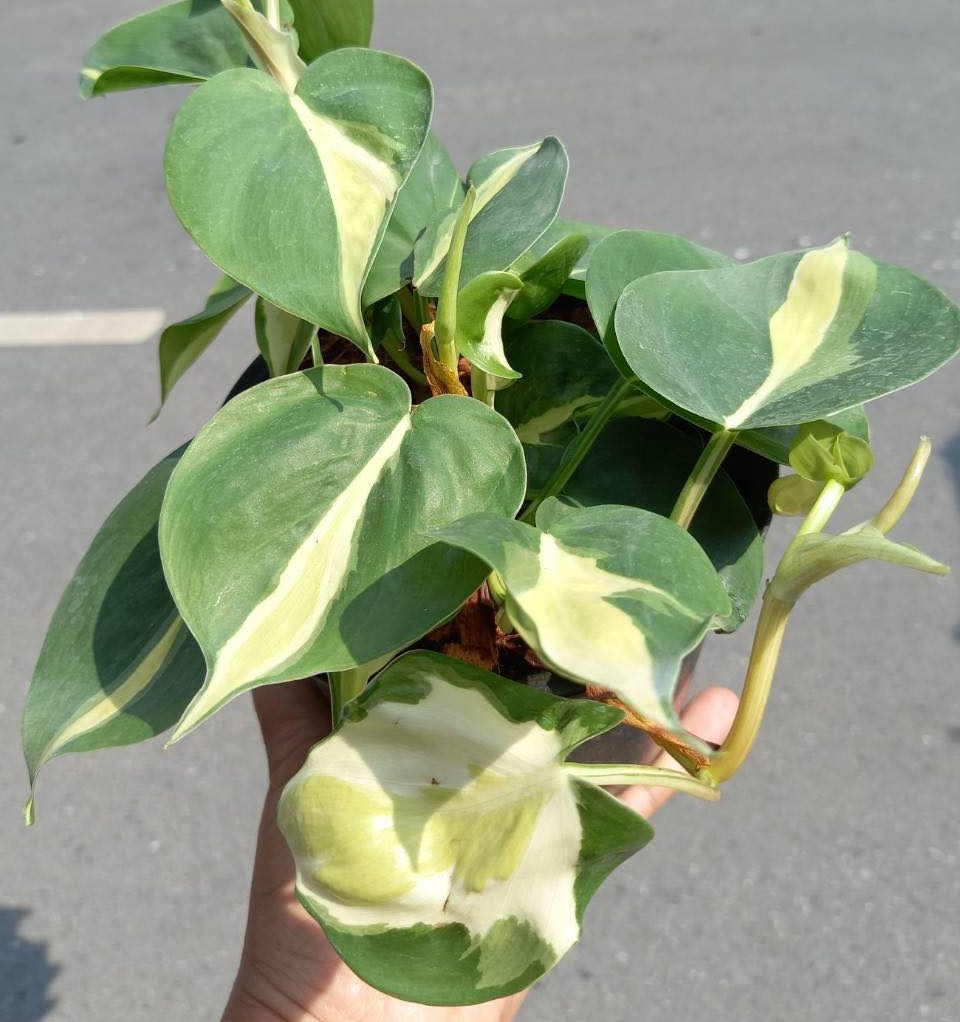
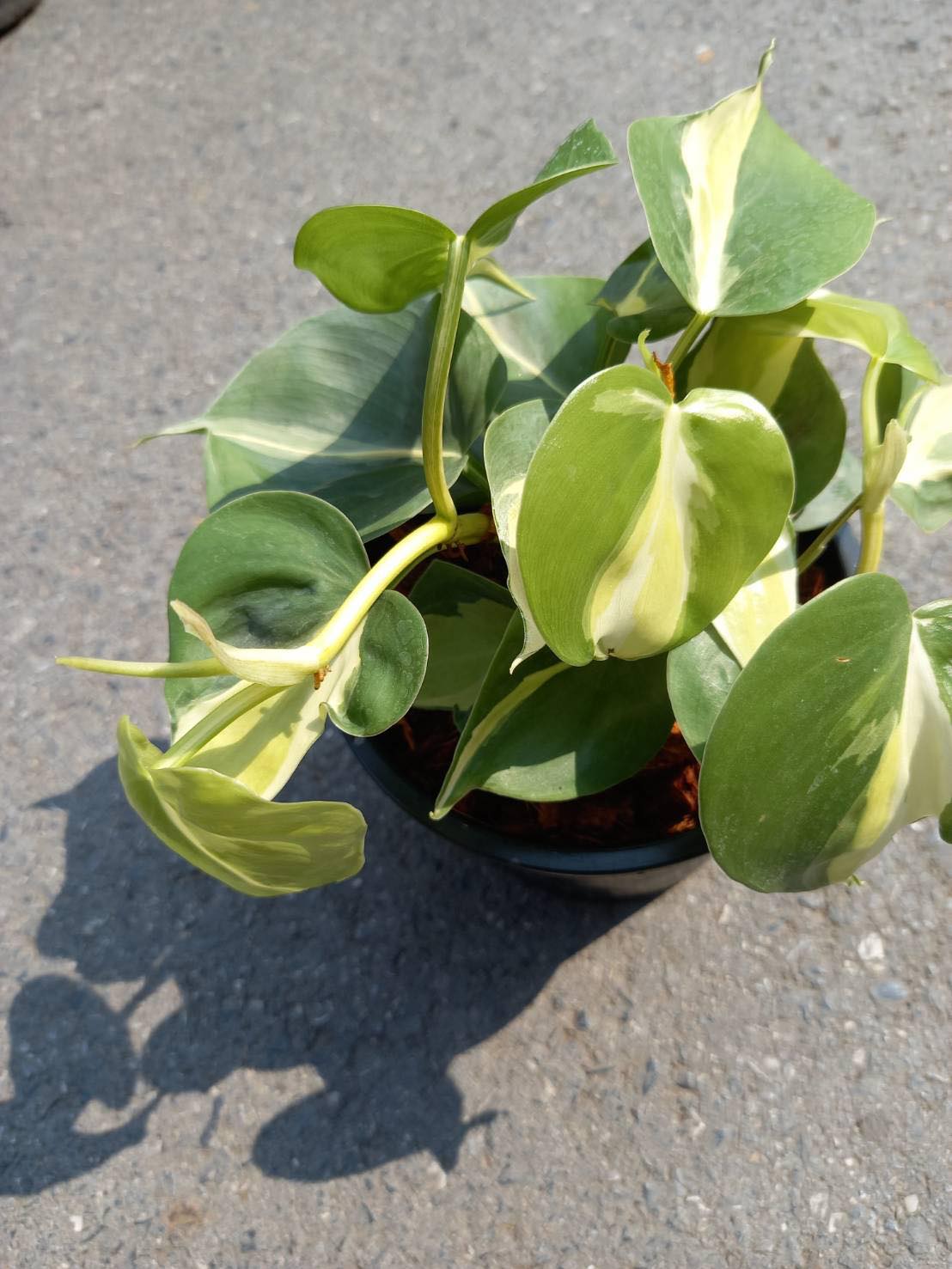
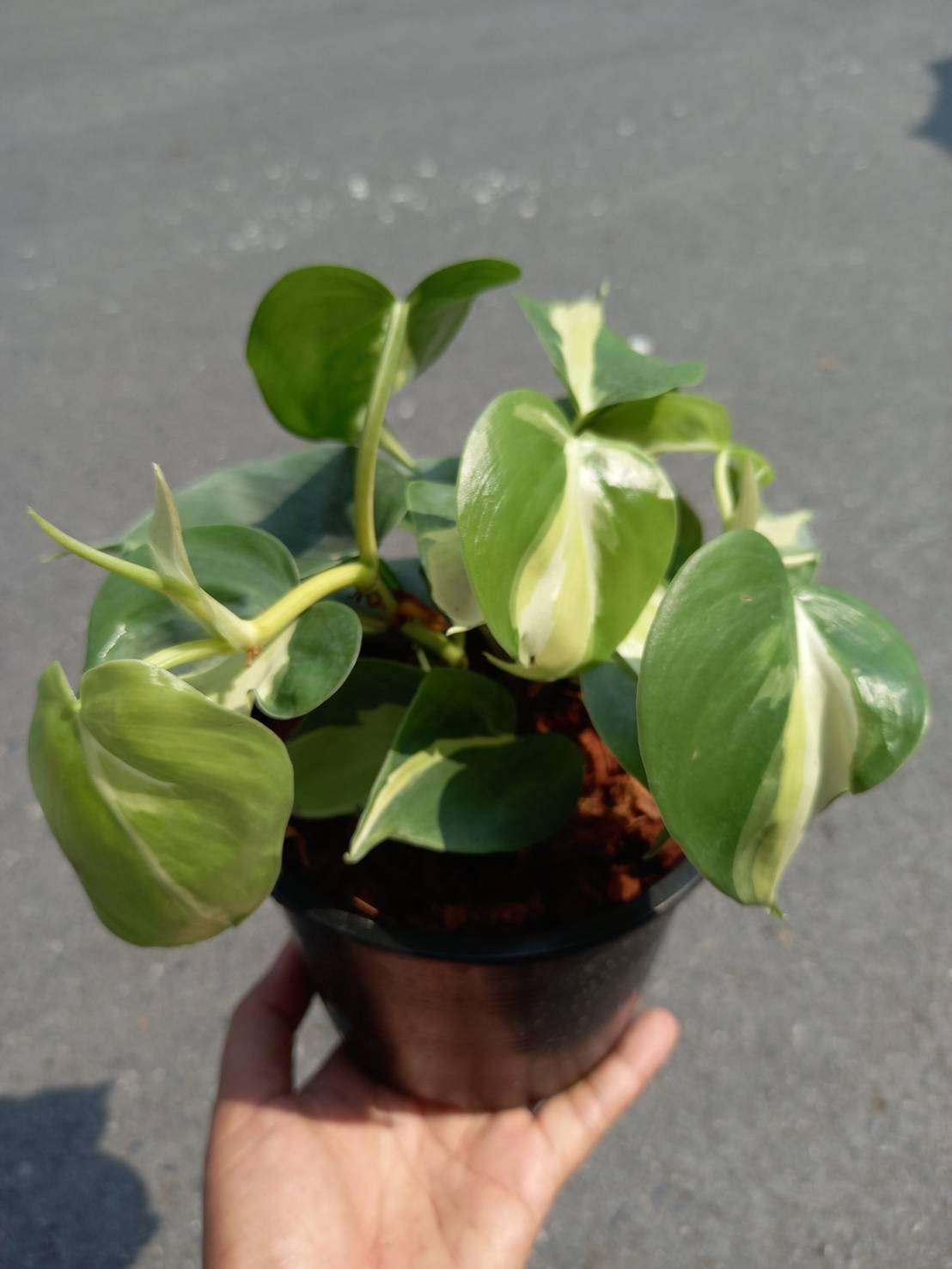
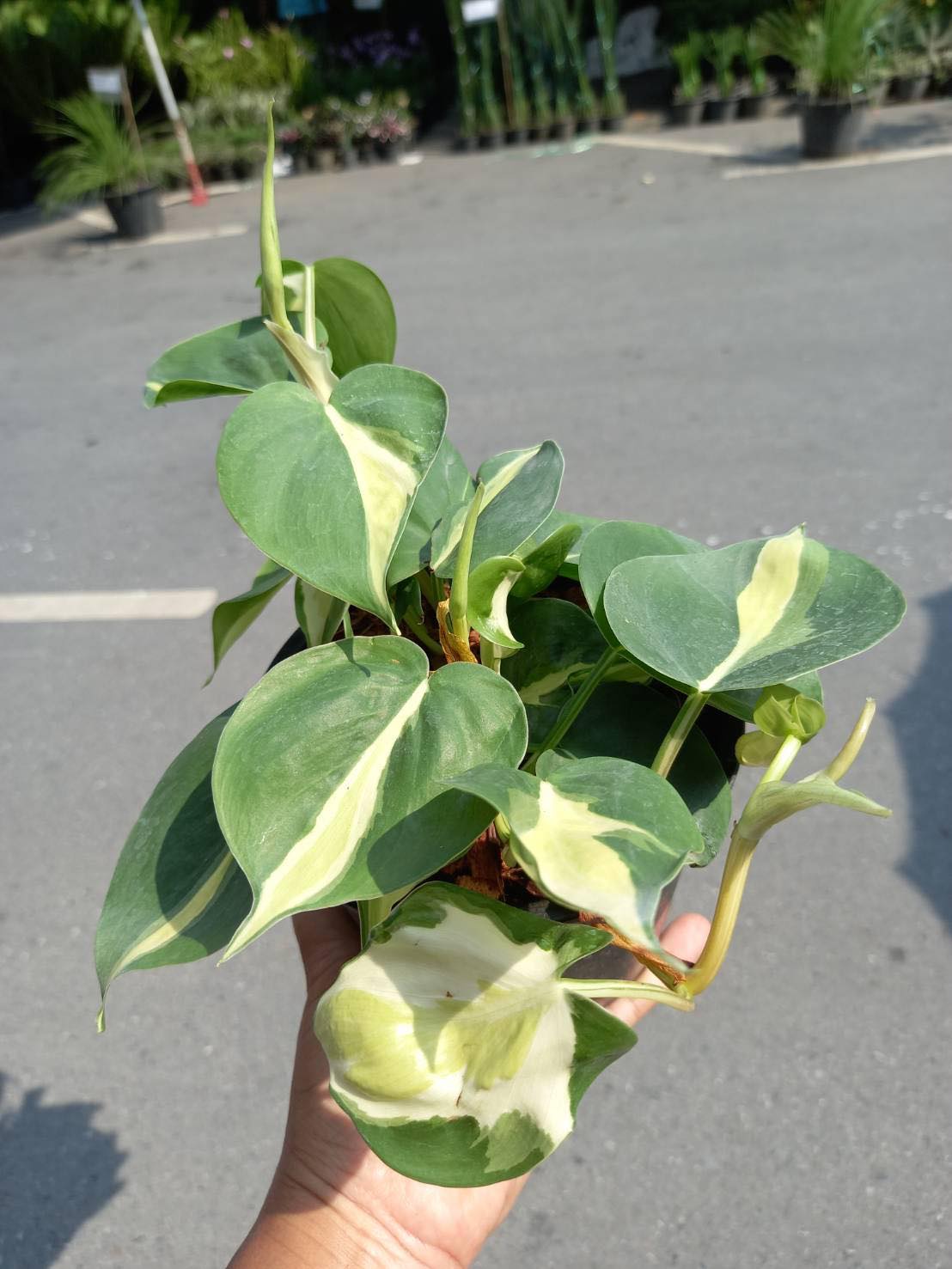
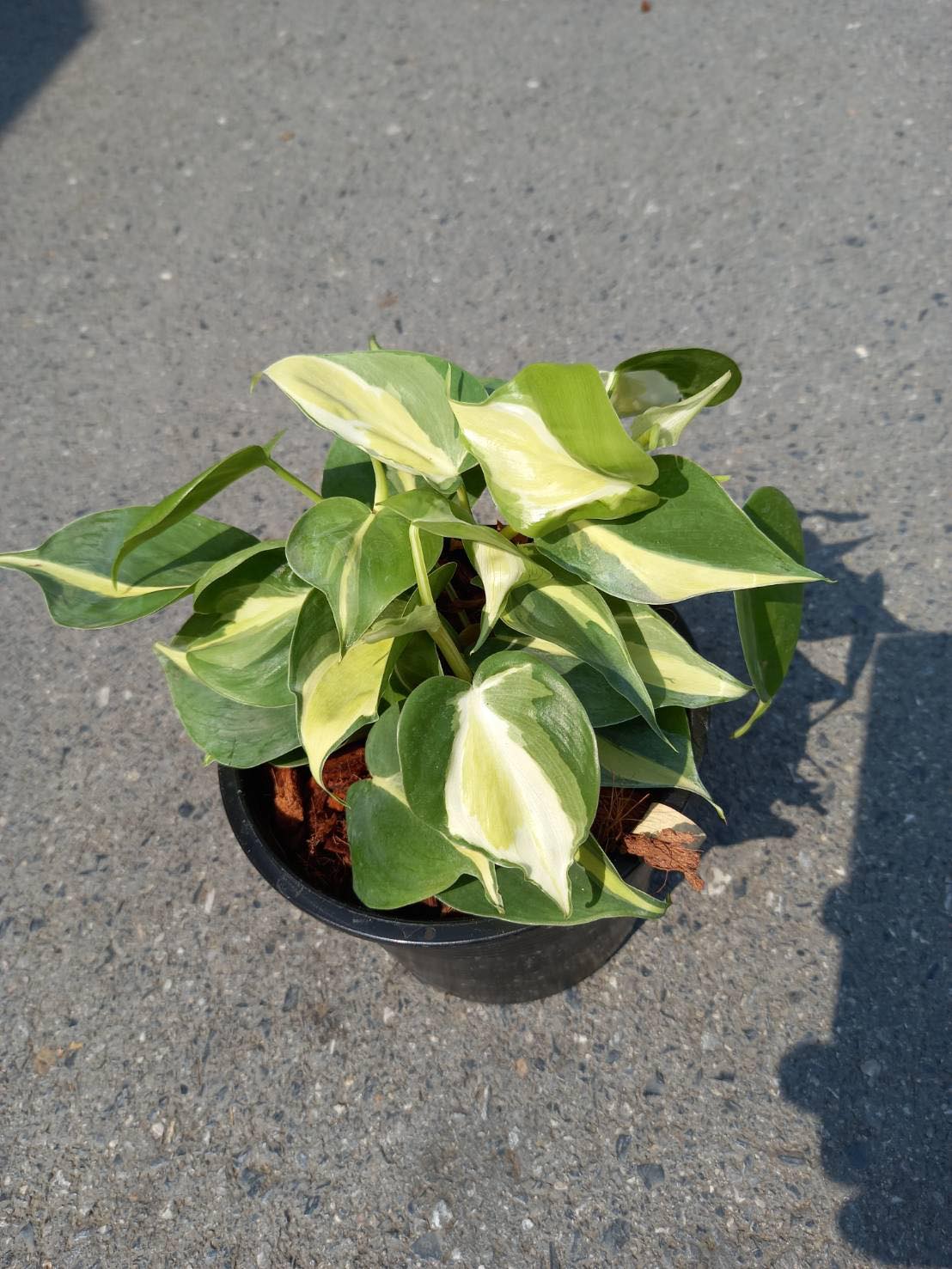
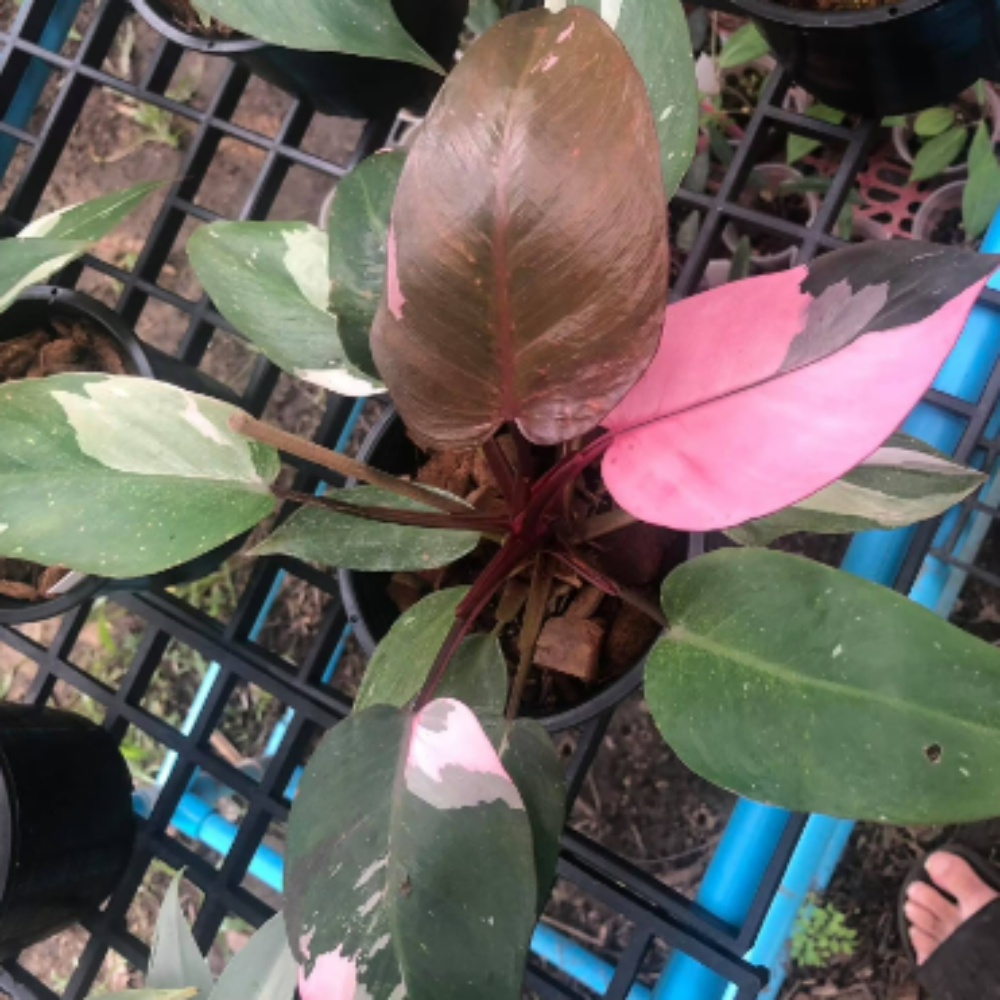
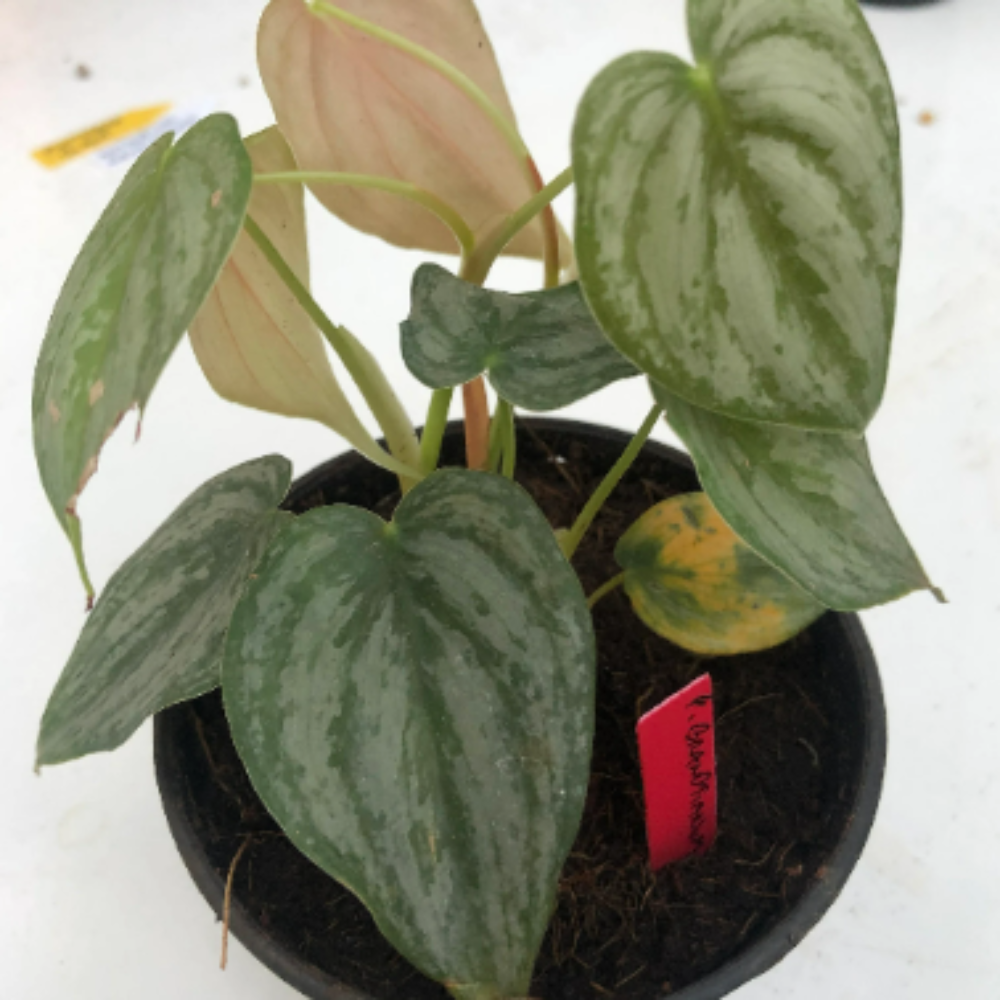
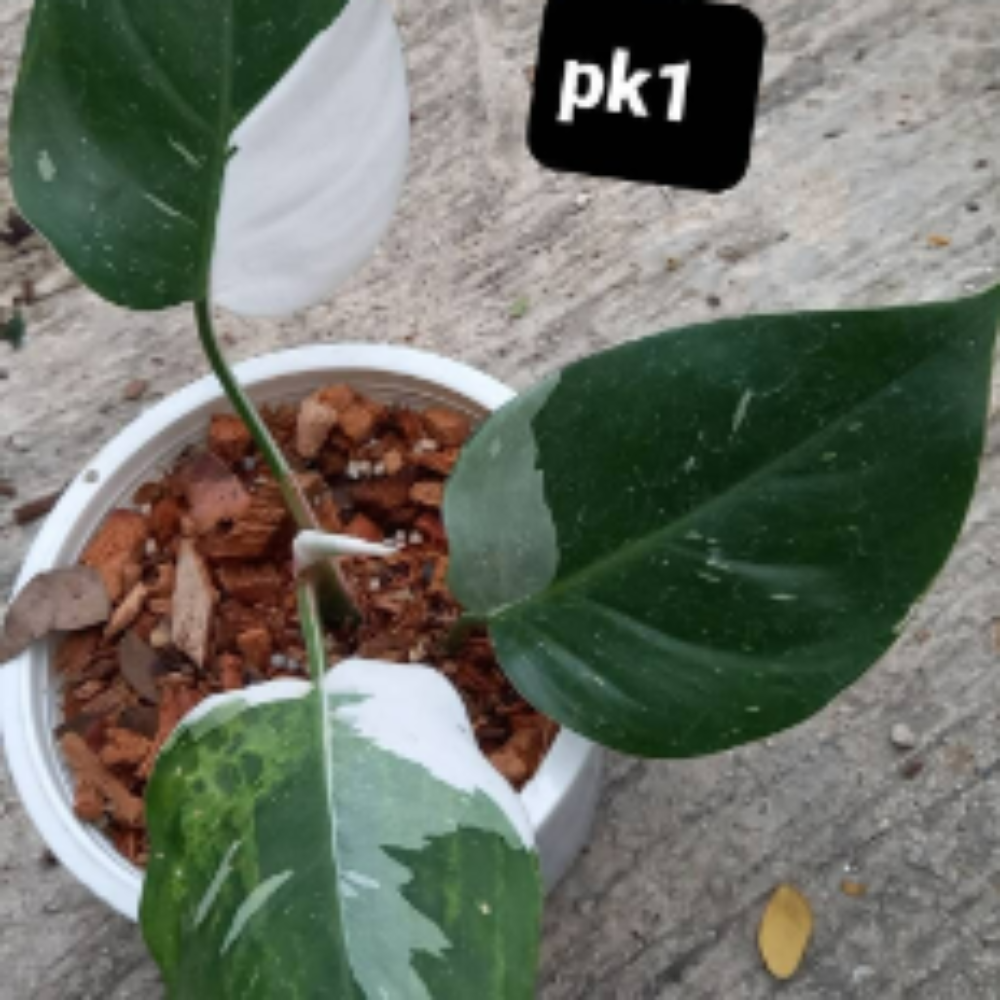
Reviews
There are no reviews yet.